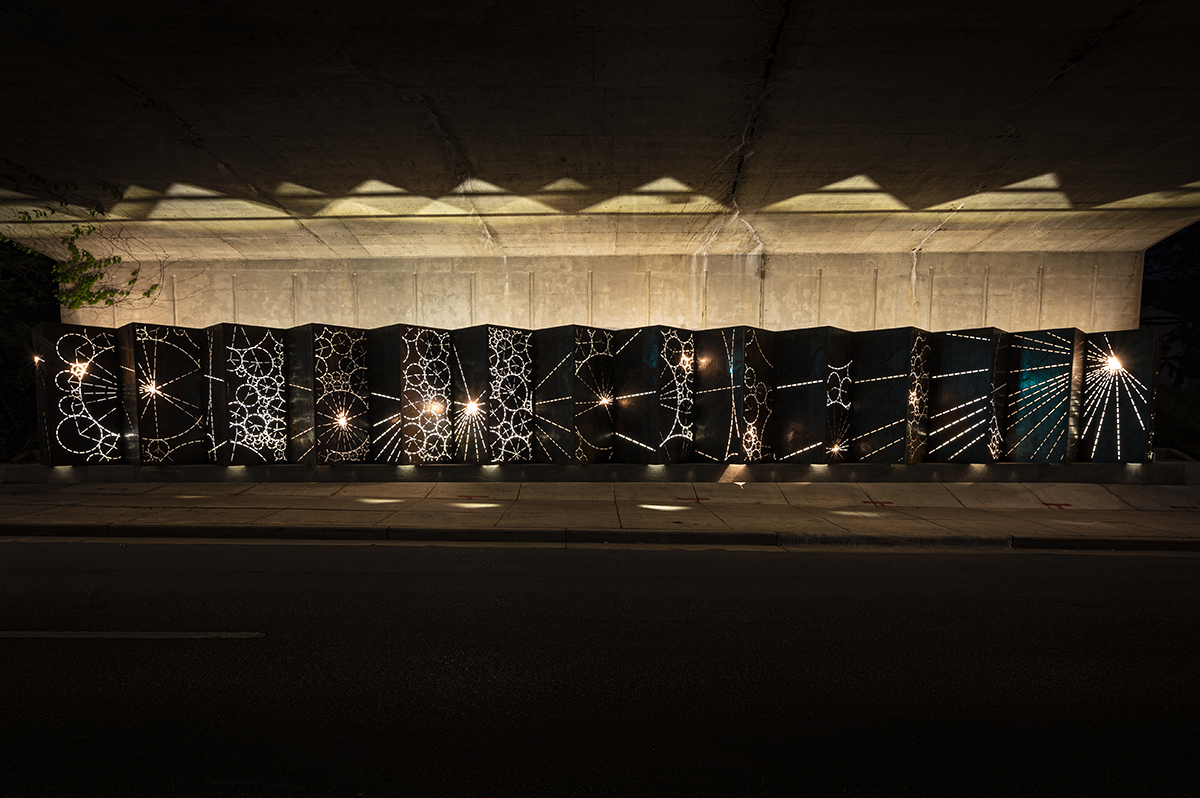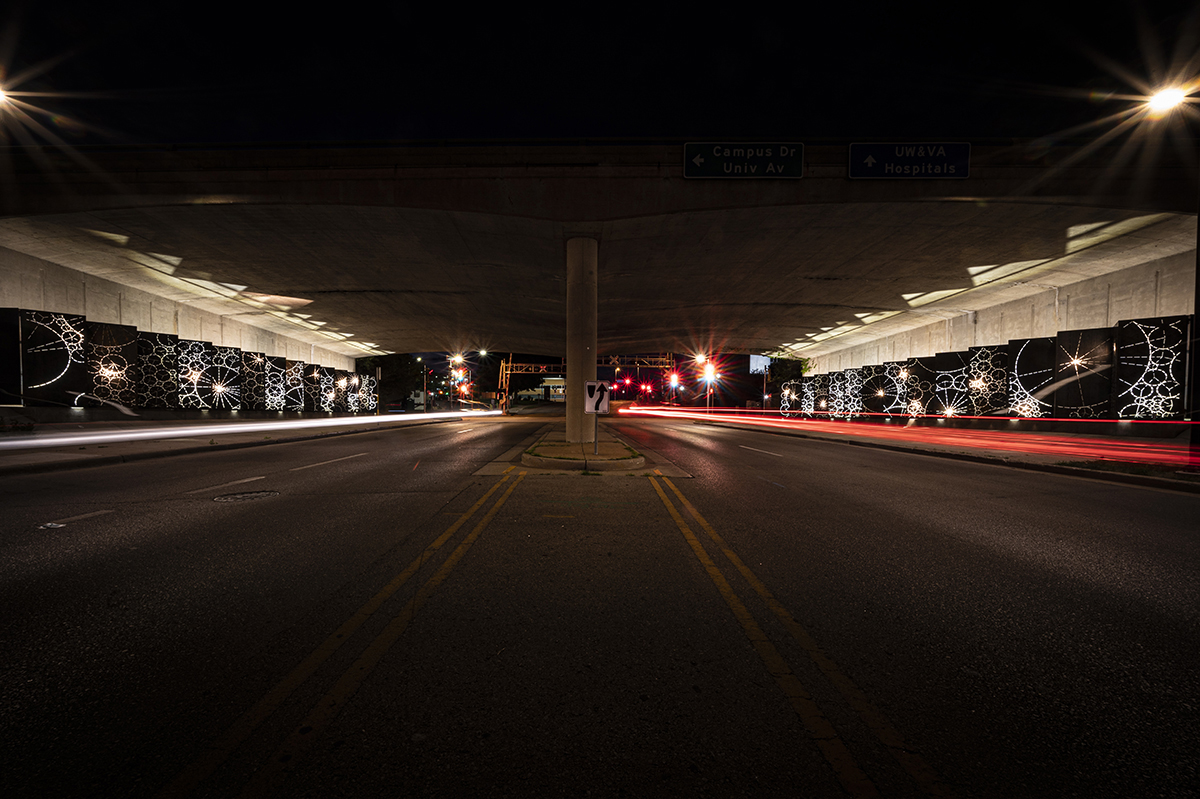If you happen to travel through the underpass on Highland Avenue beneath Campus Drive, you’ll encounter an engaging new work of art in an unexpected setting.
Two 70-foot-long, accordion-style, weathered steel structures span each side of the underpass, featuring cutout designs backlit by LED bulbs that create a shifting light mural.
The artwork, named Shift, was designed by Julia Schilling ’15 in 2014 while she was still a student. She submitted the design as part of a service-learning project in a landscape architecture class with Professor Samuel Dennis. The class then presented its designs to the Regent Neighborhood Association, which sought public art for underpasses that connect the neighborhood with the UW–Madison campus and UW Hospital.
The University Avenue Corridor Plan, approved in May 2014 by Madison’s Common Council, recommended installing public art in the underpasses to improve safety, walkability, lighting, and aesthetics. Schilling’s proposal for the Highland Avenue underpass met all those criteria.
Schilling says that the panels “provide a sense of movement through the place. So if you’re on a bicycle, or you’re walking or you’re driving, you would see that spliced imagery at a different rate, which changes the experience.”
It took seven years to complete the project, and there were many moments when Schilling feared that it would not happen. A group called 1,000 Friends of Wisconsin helped to raise funds, and in the end, she says, “the city gave a grant that really pushed it into possibility in 2019.”
Schilling, who now works remotely at her home in Milwaukee for the Madison-based Saiki Design, was very happy to see that the finished work is just like her model. “There were even a few happy accidents,” she says, “like the triangular shadows on the ceiling and sidewalk from the reflected light behind the panels. That really added to it.”
Once the installation was completed in April 2021, she visited the work and found that “people seemed to be interested. I saw a biker pull over and take pictures. Then a couple walked by from somewhere else and came to look at it. It was really cool to see that it kind of caught people’s attention.”
Published in the Fall 2021 issue




Comments
No comments posted yet.